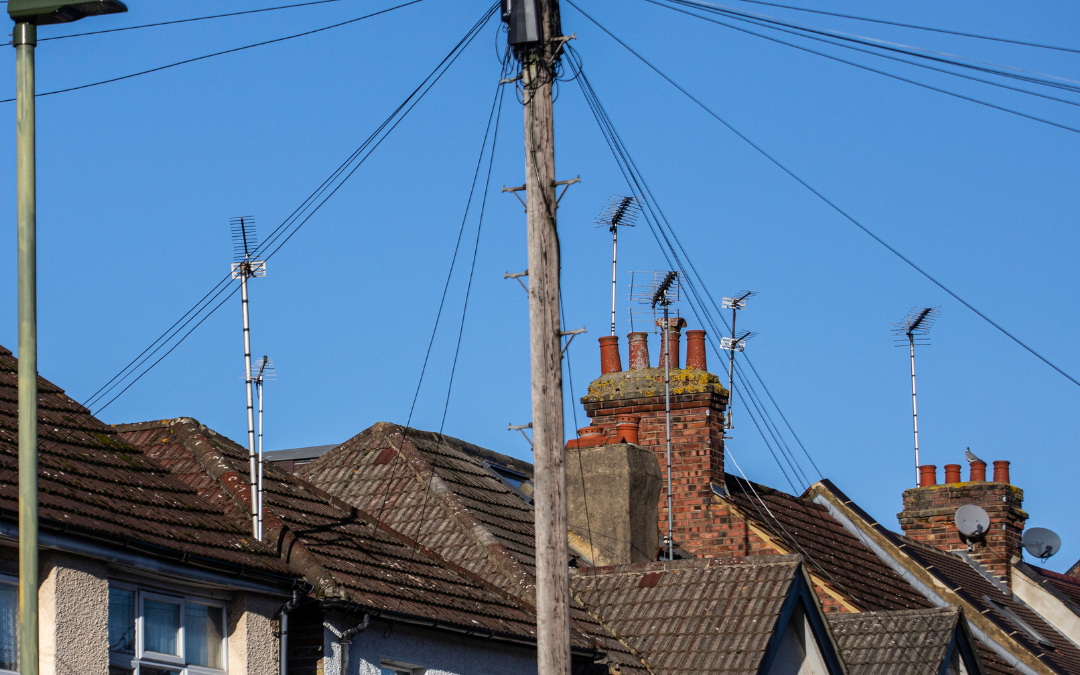New research shows that three quarters of the UK accept having telephone poles to deliver great broadband, and nearly three quarters would accept a new pole to deliver better broadband in their street and community.
Telecommunications poles have been in the news a lot recently, despite being used for more than a century and being present in many towns and cities in the UK. A new representative poll on behalf of the Internet Services Providers’ Association (ISPA), the trade association for the broadband sector, demonstrates clearly that:
-
Only a small minority (less than 20%) actually ever frequently notice a pole when they are out and about.
-
The vast majority (75%) also clearly recognise the benefits of having access to faster and more reliable broadband even if that is delivered via poles.
-
Even in roads where poles are not currently being used, a large majority (69%) would accept new poles to provide the community with better access to broadband.
While broadband providers try to use existing infrastructure or bury cables underground where possible, there are situations where this is not possible, or would lead to significantly longer disruption for residents and higher costs – and if given the choice, 70% of respondents said they would not be willing to have to pay extra to have cables pushed underground.
Commenting on the research, Steve Leighton, Chair of ISPA, said:
Upgrading the broadband network to full fibre gigabit broadband is a national priority, one that will deliver significant economic and social benefits across the UK. Poles have always been a historic feature of the UK telecommunications network and the new data clearly shows that the vast majority of the UK population is fine with that.
Our members will avoid erecting new poles but that is not always possible, and in those cases our members try their best to accommodate local concerns, However, the data clearly shows that the public does not want to pay more to hide cables underground.
We will continue to engage proactively with the Government to ensure that local concerns are reflected appropriately but we need to avoid a situation where objections from a minority lead to higher prices for everybody.
The rollout of full fibre broadband is one of the largest and most vital infrastructure projects in recent UK history, which has seen an increase from 11% full fibre coverage in December 2019, to 63% in 2024, with an additional 80% gigabit coverage. This has been delivered overwhelmingly by a range of private sector companies building new infrastructure locally, regionally and nationally.
Nevertheless, the job is not yet done – communities that are not upgraded to better broadband run the risk of being subject to a new digital divide, unable to enjoy the same level of connectivity of others From accessing public services and educational content to working from home; from streaming video content to staying in touch with family and friends, the social and economic benefits are vast, and necessary to implement.
Notes to editors
-
Polling carried out by Censuswide between 02/02/24 – 26/02/24
-
2,563 UK Respondents (Weighted Nat Rep 18+)
-
A poles FAQ has been published alongside this
Survey questions
Attitudes to existing and new pole installation
A nationwide infrastructure upgrade of this scale will inevitably lead to some disruption. ISPA members strive to keep this to a minimum but the sector understands that this can on occasion have an impact. Vocal campaigns have understandably drawn attention, but do not always give a full picture of how the public as a whole might think. The research shows that the great majority do not have an issue with poles:
-
Three quarters (75%) of British adults surveyed accept having telephone poles in their street if they deliver great broadband
-
Almost 7 in 10 (69%) surveyed would accept a new telephone pole in their street today if it delivered better broadband to their house and community
-
Less than 1 in 5 (17%) Brits surveyed would not accept a new telephone pole in their street today if it delivered better broadband to their house and community
Awareness of poles
Poles and other street furniture are used and up and down the country. Many are used by more than one broadband provider and there are guidelines for the installation of new poles:
-
Nearly double the amount of respondents rarely or never notice telecoms poles when out and about (37%) compared to only those that frequently or always notice poles when out and about (19%)
-
Just over 2 in 5 (41%) sometimes notice telephone poles when out and about.
Paying towards putting poles underground
ISPA members will often use a range of methods - including poles and ducting - to connect homes to the broadband network. Poles are often cheaper and less disruptive to use and mean providers can roll out better broadband to communities faster. The survey shows that:
-
Just over 3 in 5 (61%) of those surveyed would not be willing to contribute to paying towards putting poles underground.
-
Only 3 in 10 (30%) of those surveyed would be willing to contribute towards the added cost of hiding broadband cables underground in their street.
-
Those who would be willing to contribute to the added cost of hiding broadband cables underground in their street would be willing to contribute, on average, £179 towards the cost of doing so. The actual cost to hide cables underground in someone’s street would be ten times this per household.

